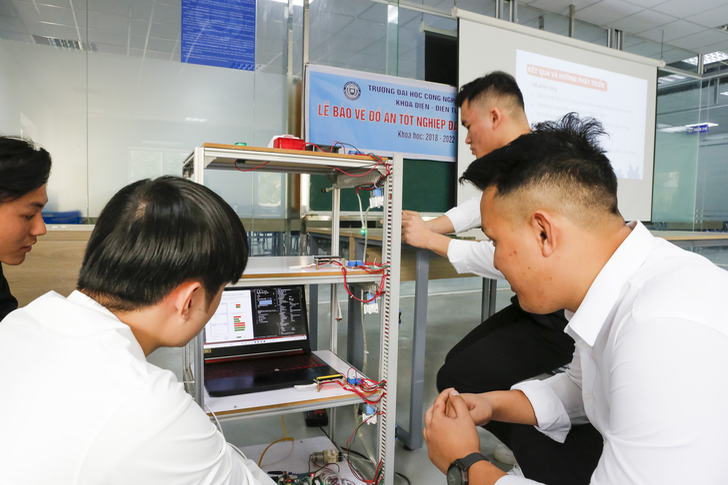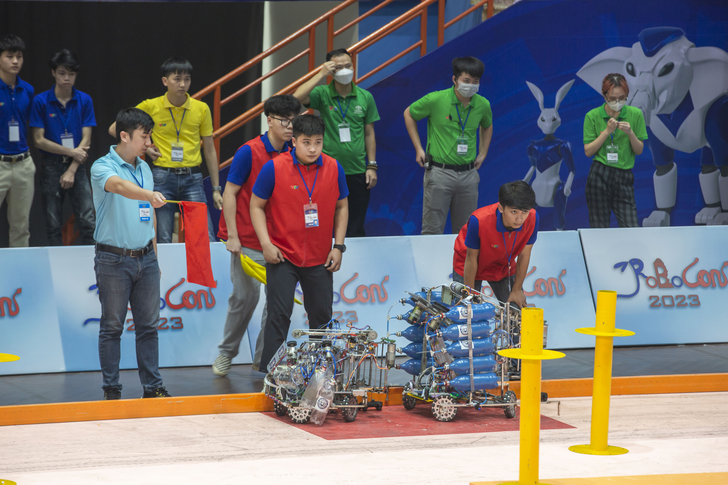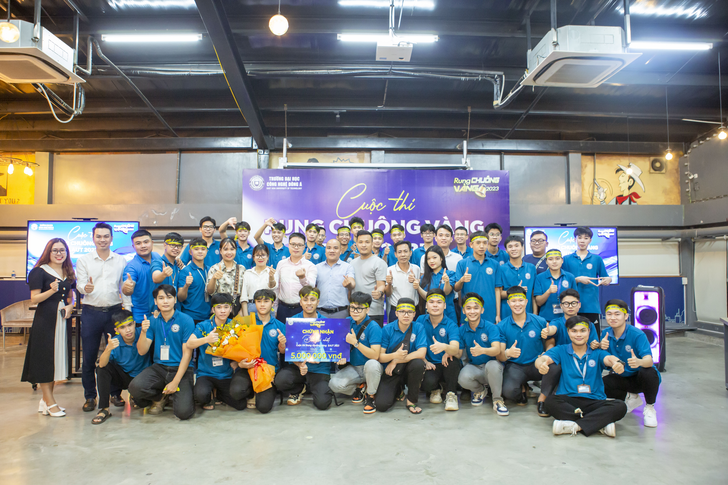Electrical and Electronic Engineering Technology has always been an indispensable part of the process of industrialization and modernization of the country. The more advanced life becomes, the more essential electrical and electronic devices are in our daily lives.
These devices serve human needs in every aspect—from daily living to production across the globe. This is considered one of the key and rapidly developing fields, widely applied with a variety of rich and useful knowledge modules such as: electronics, solar energy, control systems, telecommunications, signal processing, and more.
Overview of Electrical and Electronic Engineering Technology
Electrical and Electronic Engineering Technology is a discipline that studies and applies topics related to electricity and electronics, with various subfields such as energy, electronics, control systems, signal processing, and telecommunications. Electrical and Electronic Engineering focuses on creating high-value products with minimal material costs. The most distinctive feature of this field is the design of control systems that automatically monitor and regulate electrical parameters in production lines.
– Electrical Engineering deals with macro electrical systems such as power transmission and equipment control, often related to power distribution and dynamic circuit analysis.
– Electronic Engineering focuses on smaller systems such as microcircuits, integrated circuits, control circuits, and light electrical devices including communication networks, computers, and systems based on integrated schematics.
To design an automatic control system using electrical signals and manage the operation of electrical devices, engineers in this field must have a deep understanding of power generation and transmission technologies, electrical equipment, and system parameters. They must also understand the devices being controlled and the automation requirements of the entire production process. Microelectronic circuits are the core of electronic signal control systems, so working in this field requires knowledge of electronic components, microcircuits, and signal control tools.

Training Program in Electrical and Electronic Engineering Technology
Major Code: 7510301
Admission Combinations:
A00: Mathematics, Physics, Chemistry
A01: Mathematics, Physics, English
C01: Literature, Mathematics, Physics
D01: Mathematics, Literature, English
A03: Mathematics, Physics, History
Specialized Courses:
Microprocessor Engineering, Electric Drive, Electrical Safety, Power Plants and Substations, Automatic Control Engineering, Power Electronics, Logic and PLC Control, Power Transmission and Distribution Networks, Programming Techniques, and more.
By choosing Electrical and Electronic Engineering Technology, students will…
– Be equipped with full knowledge to take on roles such as design, manufacturing of machine parts, operation, maintenance, and repair of electrical and electronic equipment and systems in companies, factories, and industrial plants. – Study and work with new technologies such as Raspberry Pi and Arduino to stay up to date with global trends. – Learn in modern lecture halls equipped with advanced machinery, laboratories, and the latest technologies under the guidance of highly qualified lecturers. – Experience a training model combining enterprises, the university, and recruiters, giving students opportunities to create commercially viable products. – Many students receive provisional employment offers during their studies and are officially recruited into member or partner companies of the POLYCO Group after graduation.

Career Opportunities for Electrical and Electronic Engineering Graduates
According to economic experts, mechanical and engineering fields such as Telecommunications, Mechatronics, Metallurgy, Automotive Engineering, and Manufacturing are facing a workforce shortage of over 40%. This is due to increasing electricity demand, renewable energy development, the expansion of communication and automation systems in industry, and the modernization of infrastructure. As Vietnam continues to integrate with global economies, large corporations such as Siemens, Intel, Samsung, and LG are expanding their investments in the country, offering abundant career opportunities for graduates in Electrical and Electronic Engineering Technology. Some potential positions include:
– Technical staff or design consultants, machine operators, and maintenance personnel at power companies, power plants, and substations.
– Researchers in laboratories and industrial automation or electronics manufacturing units.
– Employees at the Vietnam Posts and Telecommunications Group, Vietnam Electronics Corporation, and related subsidiaries.
– Engineers at major electronics companies such as Samsung, LG, and Canon.
– Designers and developers of circuit boards for applications such as robotics, smart home systems, and IoT (Internet of Things).
Studying Electrical and Electronic Engineering Technology at EAUT
The training program in Electrical and Electronic Engineering Technology at EAUT emphasizes practical learning (30% theory, 70% practice) and cooperates closely with enterprises to enhance training quality. The university combines classroom instruction with hands-on practice, enabling students to develop analytical and problem-solving skills for operating and controlling electrical and electronic equipment in industrial production and energy management. Students are also provided with foundational knowledge to access global scientific advances and adapt to evolving technological environments. Additionally, they develop essential soft skills for presenting, organizing, and implementing real-world projects, as well as communication and teamwork skills for effective collaboration.

Electrical and Electronic Laboratory at EAUT
The laboratory is fully equipped with essential components and modern devices such as 3D printers for rapid prototyping with PLA & ABS materials, oscilloscopes, standard components (resistors, capacitors, coils, power supplies, etc.), multimeters, and electronic training kits. The computer systems are installed with professional electronic circuit design and simulation software such as Altium, Proteus, Tina, CircuitMaker, and AutoCAD. Microcontroller families such as PIC, ARM, and AVR 8051 are provided for embedded design practice. Arduino and Raspberry Pi modules are used for microcontroller programming and other IoT-related projects.
Choosing to study Electrical and Electronic Engineering Technology at East Asia University of Technology (EAUT), students are trained comprehensively—from theoretical foundations to practical applications—with the best possible learning conditions. With promising career prospects and a well-balanced curriculum, this field has become an increasingly popular choice among young people. We hope this article helps those who are considering their future career paths make the right decision. Wishing you success!
East Asia University of Technology
Trinh Van Bo Street, Nam Tu Liem District, Hanoi Hotline: 0243.555.2008 or 024.2236.5888 Email: tuyensinh@eaut.edu.vn Fanpage: https://www.facebook.com/dhcnDongA/
